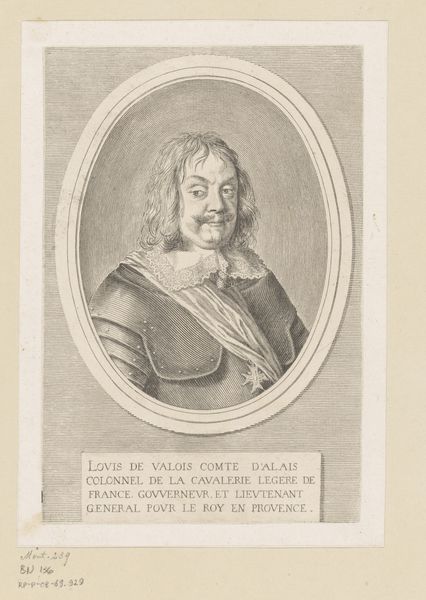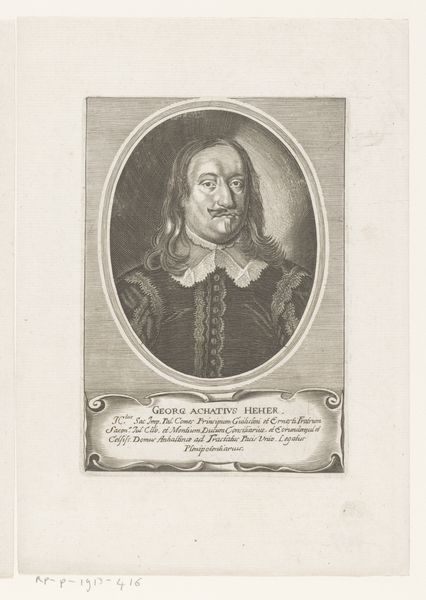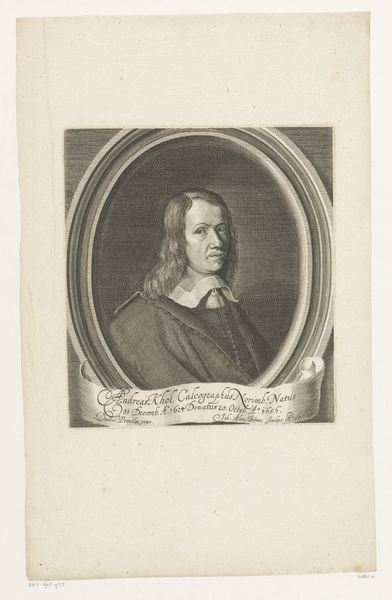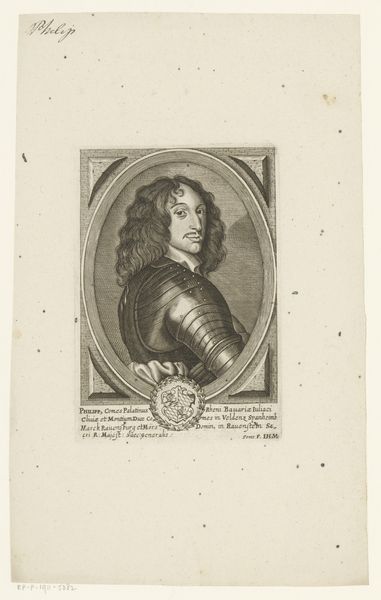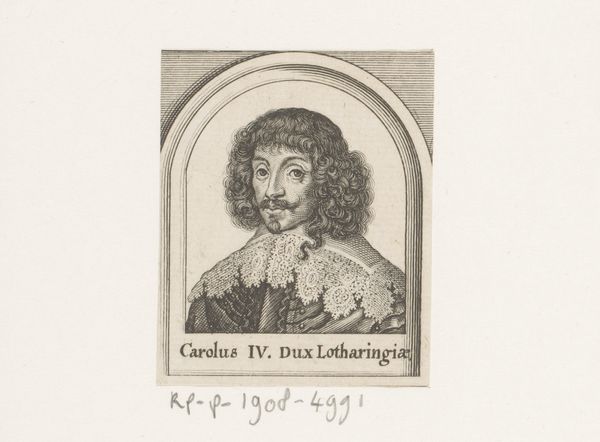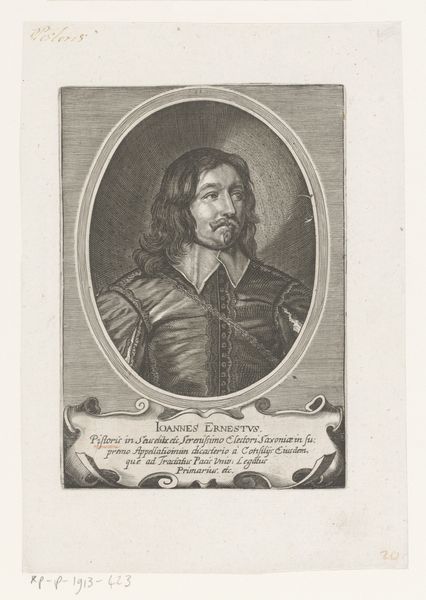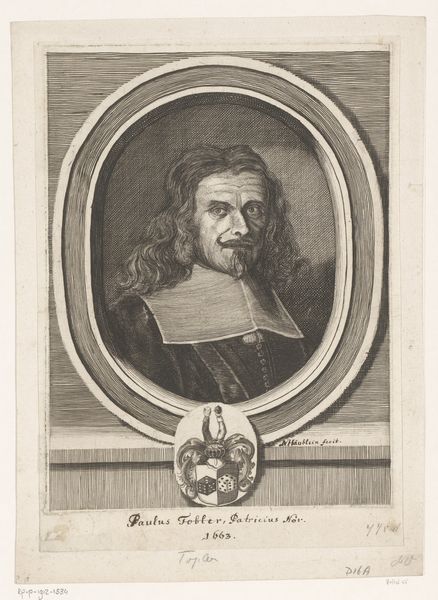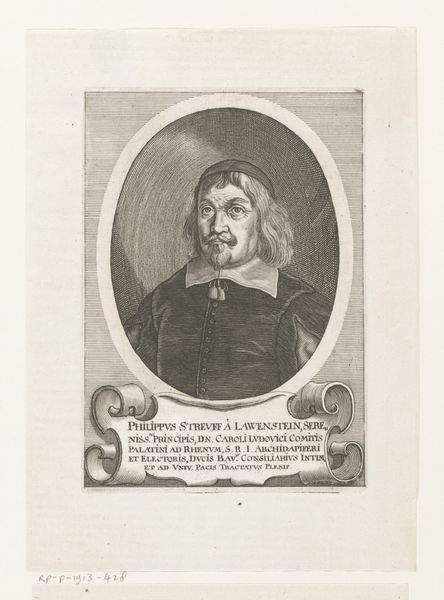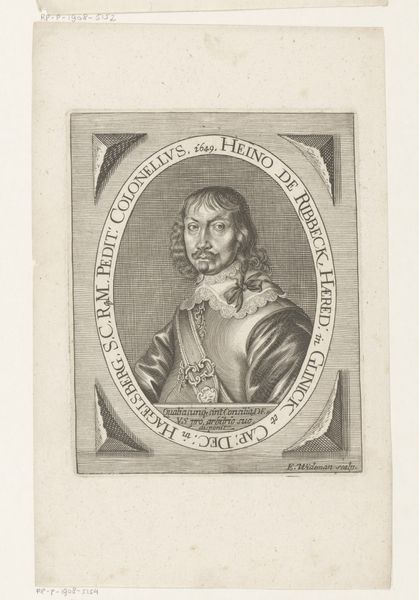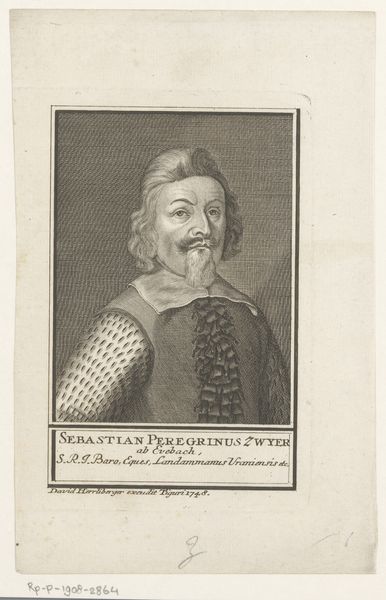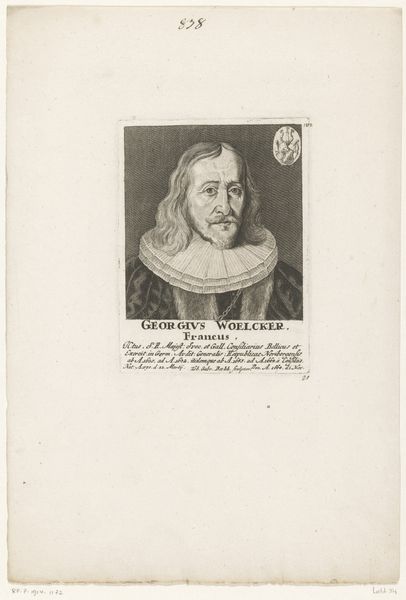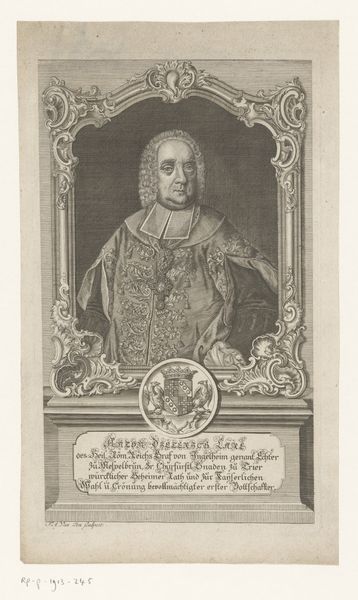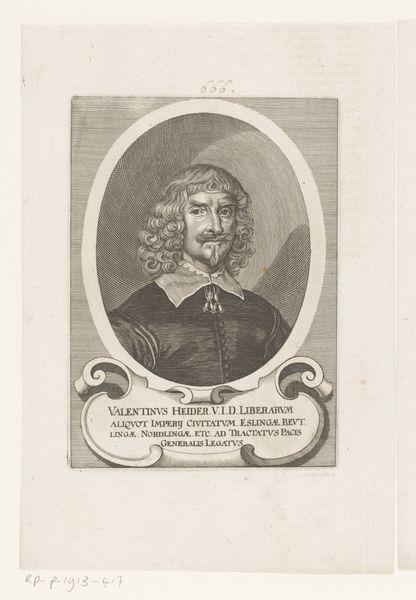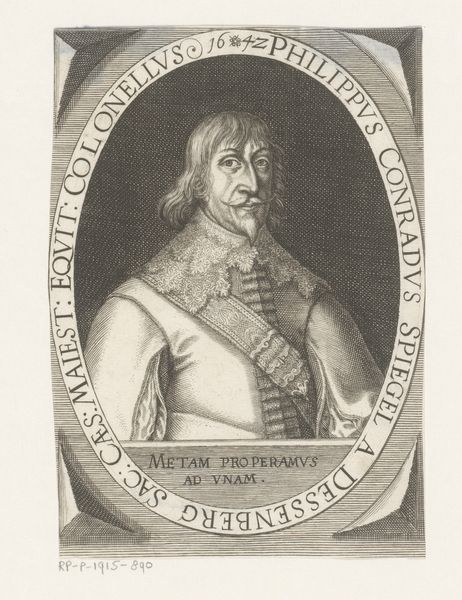
engraving
#
portrait
#
baroque
#
old engraving style
#
figuration
#
line
#
history-painting
#
engraving
Dimensions: height 116 mm, width 74 mm
Copyright: Rijks Museum: Open Domain
Editor: This is "Portret van Michael Lemke," a work from after 1630 by Peter Troschel. It's an engraving, and I’m immediately struck by the subject’s intense gaze, and all of the lines in the piece - it’s so detailed. What significance do you see in a portrait like this? Curator: This engraving acts as a cultural memory device. Note the precise rendering of Michael Lemke's features and clothing; this communicates status and authority. Consider the Baroque era: portraits were not merely likenesses but visual statements of power. What elements here denote that power to you? Editor: Well, his clothes, for sure, the elaborate sash. And maybe just the formality of it all. But is there more than just power at play? It almost feels… austere. Curator: Austerity, yes, that’s a key observation. Think of the Protestant work ethic gaining traction. Restrained adornment, a focus on inner virtue. Even his gaze, direct yet not overtly inviting, hints at that internal strength. Do you see symbols of his profession anywhere? Editor: Not specifically, unless you count the collar? It looks pretty official. But if it's just a portrait, why bother with such precise engraving techniques? Curator: Engraving lent itself to wider dissemination, ensuring Lemke’s image – and the values he represented – could circulate amongst a broader audience. The very act of replication elevates the subject. Consider how photography fulfills a similar role today. The symbol of influence can live on through each reproduced artwork. What lasting message do you think Troschel intended? Editor: So it's not just about remembering him, but about remembering *what* he stood for? The values and ideals? That transforms it. Curator: Precisely. The power of a portrait resides not only in who it depicts, but also in what cultural narrative it perpetuates, influencing future perceptions and ideals. Editor: I see that now - thank you for pointing it out! It gives the image so much more depth.
Comments
No comments
Be the first to comment and join the conversation on the ultimate creative platform.
